Veigela blooming "Alexandra": description, planting and care rules
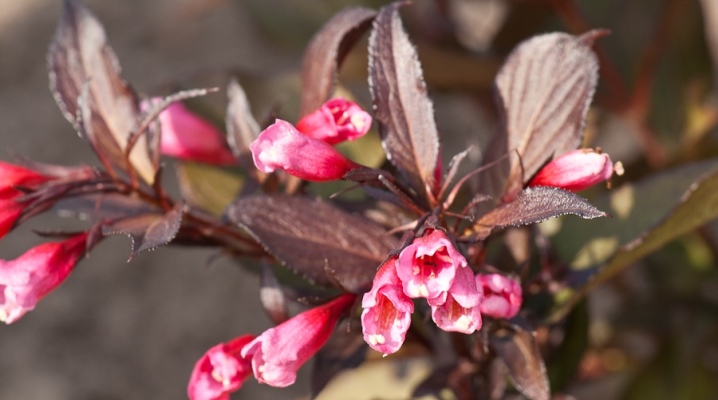
A luxurious and unpretentious weigela plant can become the main decoration of a garden plot or successfully fit into a general floral arrangement. The blooming "Alexandra" weigela is especially popular in the world of gardening. Florists appreciate its aesthetic appearance and unpretentiousness to growing conditions.
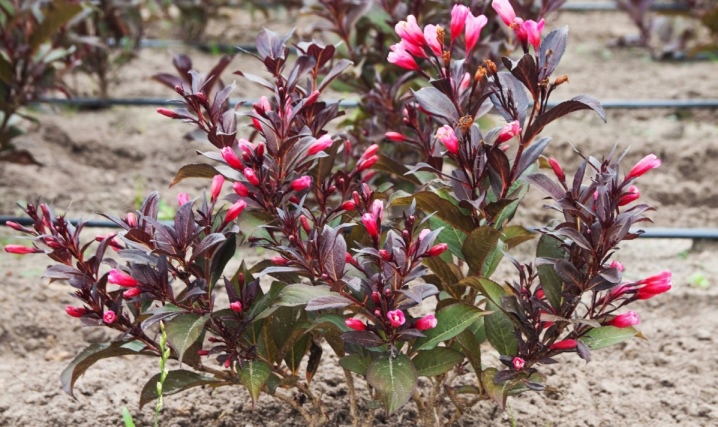
Description
The flowering species are also called florida. Veigela "Alexandra" is a deciduous shrub up to 1.2 m high with a crown width of up to 1.5 m. In the first two years of life, the culture grows well - by 20-25 cm per year, gradually the growth slows down. A five-year-old plant is an adult and stops gaining in growth. The lifespan of one specimen is limited to 40 years.
The shape of the bush is somewhat rounded, the crown is compact, neat, formed by multiple shoots. Erect branches of dark brown color. Flowering is quite lush, lasts from June to July, and sometimes lasts until September, although not so abundantly.
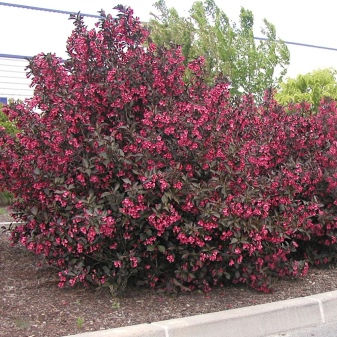
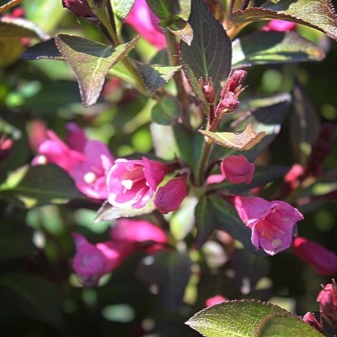
The presented variety has dense foliage that changes color depending on the season - from burgundy to yellow. The leaves are lanceolate, their length is up to 9 cm, width is up to 4 cm. The shape is finely toothed, the surface is smooth, matte. The main color is dark burgundy with cream veins, in the shade the shade is closer to brown. Leaves do not fall off until the onset of the winter cold.
Culture has mixed root system, as well as dark gray seed pods containing two seeds, ripening in September... The grains scatter near the parent bush and germinate the next year.
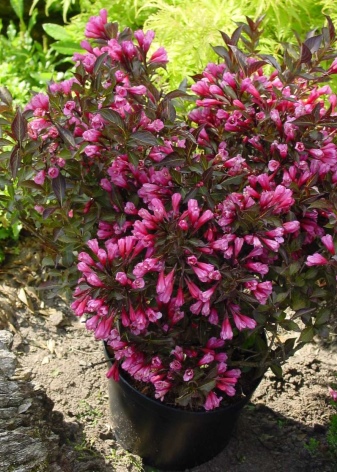
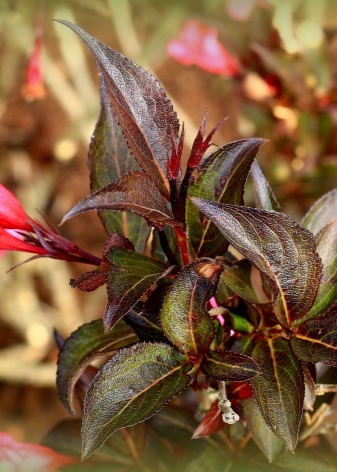
How to plant?
The presented variety has good survival rate and does not need any special conditions. And also it is characterized by high frost resistance (up to -35 degrees) and responds normally to crown formation. In temperate climates, it is recommended to plant the crop at the end of April. It is important that the soil has time to warm up well.
In the fall, it is better not to plant, otherwise the seedling will not have time to adapt to the new conditions before the onset of cold weather and will die by the spring.
If planting is planned in a region with a warm climate, then you can plant the plant both in the spring - at the beginning of April, and in the fall - at the end of September.
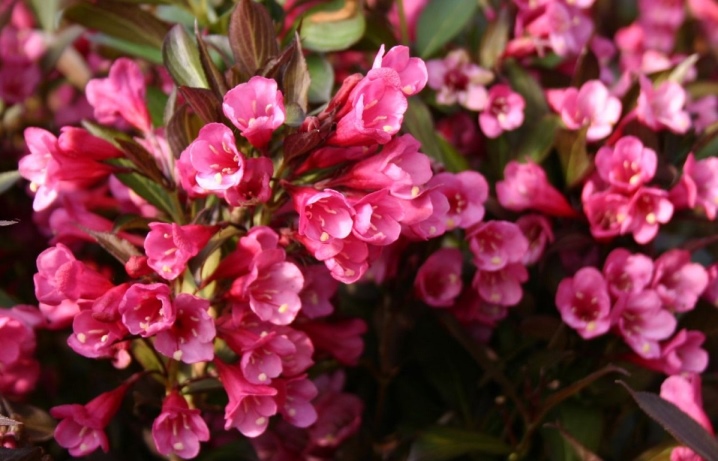
This variety loves light, with a lack of sun, the crown of the shrub will not be particularly decorative. Therefore, choose an open area for landing, sheltered from the wind. You can plant a crop on the southern or eastern side of the slope, behind the wall of a structure, or near other shrubs that will not shade their blooming neighbor.
It is desirable that the site be removed from the place of occurrence of groundwater. The plant will thrive best in light, fertile, well-drained, slightly alkaline or neutral soil.
Gardeners advise to dig up the selected flower bed a couple of weeks before planting and add organic fertilizing. If the soil is too acidic, it is recommended to dilute the composition with products containing alkali.
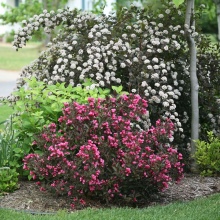
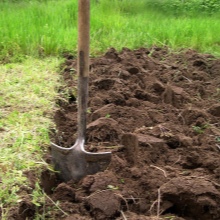
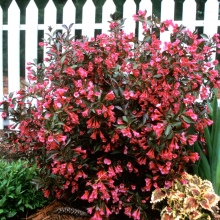
Here is a step-by-step planting process.
- Prepare a nutrient mixture. To do this, mix equal parts turf, compost and sand. For 10 kg of soil add 200 g of mineral fertilizers and 0.5 kg of ash.
- Dig a planting hole 70 cm deep and 50 cm in diameter.
- Place a drainage layer at least 15 cm high on the bottom.For example, medium-sized gravel or broken brick will do.
- Add the previously prepared mixture to a level of 25 cm.
- Place the seedling in the middle of the planting hole, fill the empty space with the remaining fertile mixture.
- Cover the planting site with soil on top.
- Tighten the trunk circle, moisten and mulch the planting site.
In the process of planting, remember that the root collar should not be buried, but located at ground level.


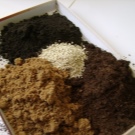

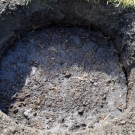
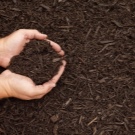
Growing features
Caring for weigela varieties "Alexandra" includes a number of activities.
- Water the plant in a timely manner in small portions, the recommended amount is 8 liters of water per bush. If there was little snow in winter, then the watering procedure is carried out immediately after it melts.
- Several times a year, this representative of the flora needs fertilization. In early spring, gardeners recommend feeding weigela with a mineral mixture including superphosphate, urea, potassium. During the period of bud formation, potassium and double superphosphate are suitable as additional nutrition. Periodically, you can offer organic culture to the culture, it has a beneficial effect on the development of the shrub.
- In the spring, sanitary pruning is carried out, removing dry, injured, frozen branches. To rejuvenate the bush, you can cut off the stems after flowering, the age of which has exceeded 3 years. The formation of a crown for an aesthetic purpose is also allowed.
- Before wintering, it is important to properly insulate the plant. It is customary to tie the branches with a rope and bend them to the ground, and cover them with dry foliage or cover them with agrofibre. Under the snow, the specimen will not freeze and will feel quite comfortable, so you can sprinkle shrubs with snow in winter. The plant needs special insulation in the first year of life.

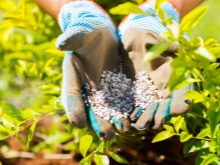
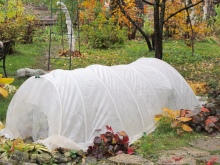
Diseases and pests
The immunity to diseases and insects in this variety is average and largely depends on compliance with the rules of agricultural technology. So, overflow and high humidity contribute to the occurrence of putrefactive processes in the root system. The drug "Topsin" will help to save the plant. As a preventive measure in spring, the culture can be processed copper sulfate. If signs of rust appear on the bush, then it is recommended to use bordeaux liquid.

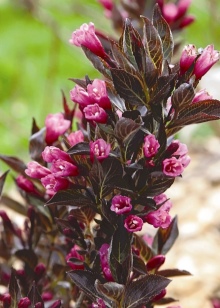

Pests also do not bypass the weigela. If the plant is affected by a spider mite, then use means "Keltan". In case of aphid attack, use the drug "Rogor"... Funds will save thrips and caterpillars "Nitrofen" or "Aktara"... To prevent the attack of the bear and the May beetle, in springtime, you can add under the root of the plant solution of "Karbofos".
In addition, repellents (calendula, tansy, pelargonium) can be planted nearby - these crops scare away pests with their sharp aroma.
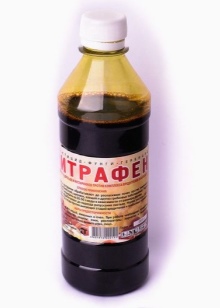
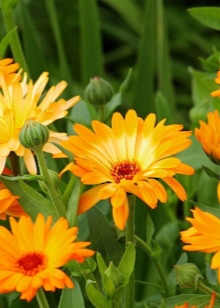
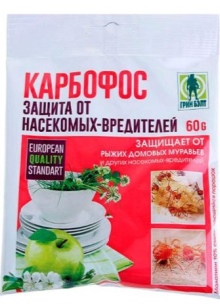
Reproduction
You can breed a shrub generative and vegetative ways. When using the seed method, the planting material 100% retains the characteristics of the parent plant. Sowing is done in warm ground in spring, and you can plant seedlings in a permanent place next spring. Flowering can be observed after 3 years.
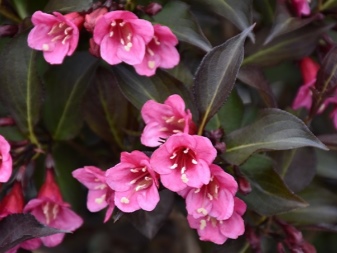
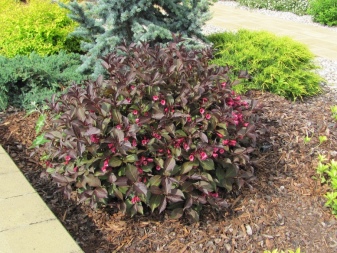
However, this is a rather long and laborious breeding method, so other methods are more common.
- Division of the bush. To do this, they select an instance at the age of at least 3 years, remove the bush, cut it into several parts and plant it in a new place in the spring.
- Layers. In spring, the lower perennial shoot is bent to the ground, strengthened and sprinkled with soil. Watering is regularly carried out until autumn. Already in the spring you can see seedlings that should be divided and planted. Flowering in this case is expected next summer.
- Cuttings. For this method of reproduction, cuttings 20 cm long are cut from the middle part, placed in a container with a substrate, covered with glass or film on top, and in the spring the rooted material is seated in a permanent place.
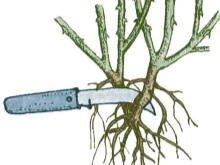
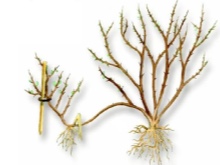
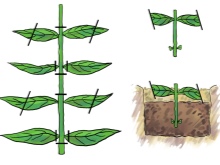
Application in landscape design
When decorating a garden, landscape designers often use the presented variety. They are attracted by the variability of the colors of the foliage, the saturation of shades during flowering, the rounded crown. Thanks to the ability to carry out aesthetic pruning from plants, you can form a hedge. On a flower bed, weigela can act as a solo representative or be included in a garden ensemble.
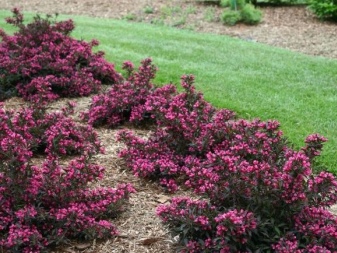

Weigela "Alexandra" can serve as a background for bulbous perennials, as well as participate in the symmetrical design of a gate or entrance, for example, when creating paired compositions. This crop is often used in mixed mixborders. A picturesque landscape can be created by planting it against the background of tall conifers. Weigela will fit especially well into the Japanese design of a garden or a personal plot.
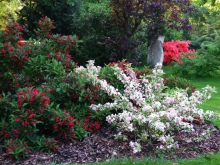
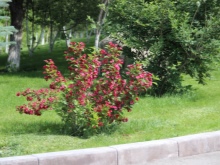
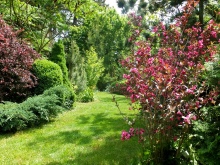
For even more information on flowering weigels from experienced gardeners, see the next video.



































































The comment was sent successfully.